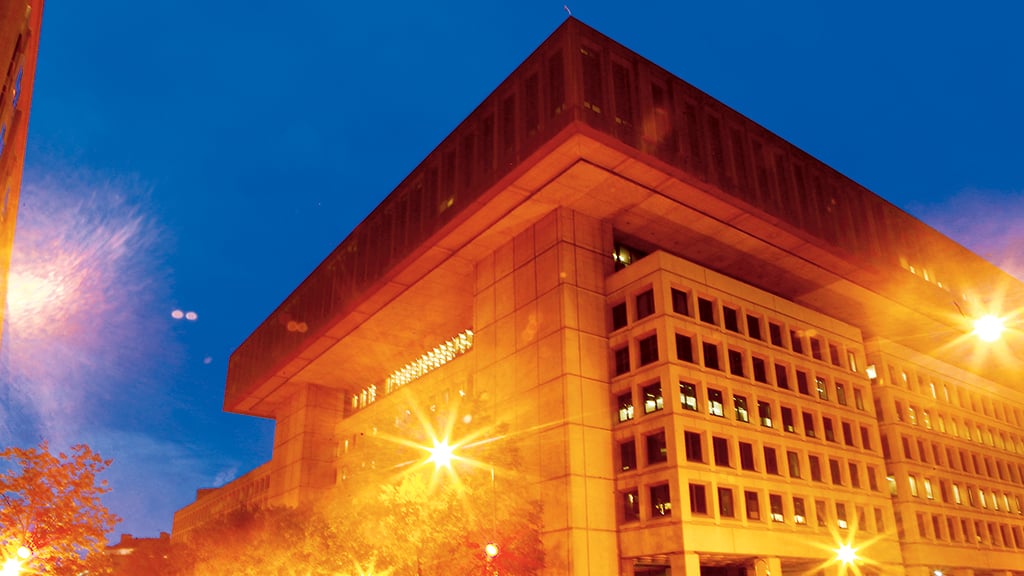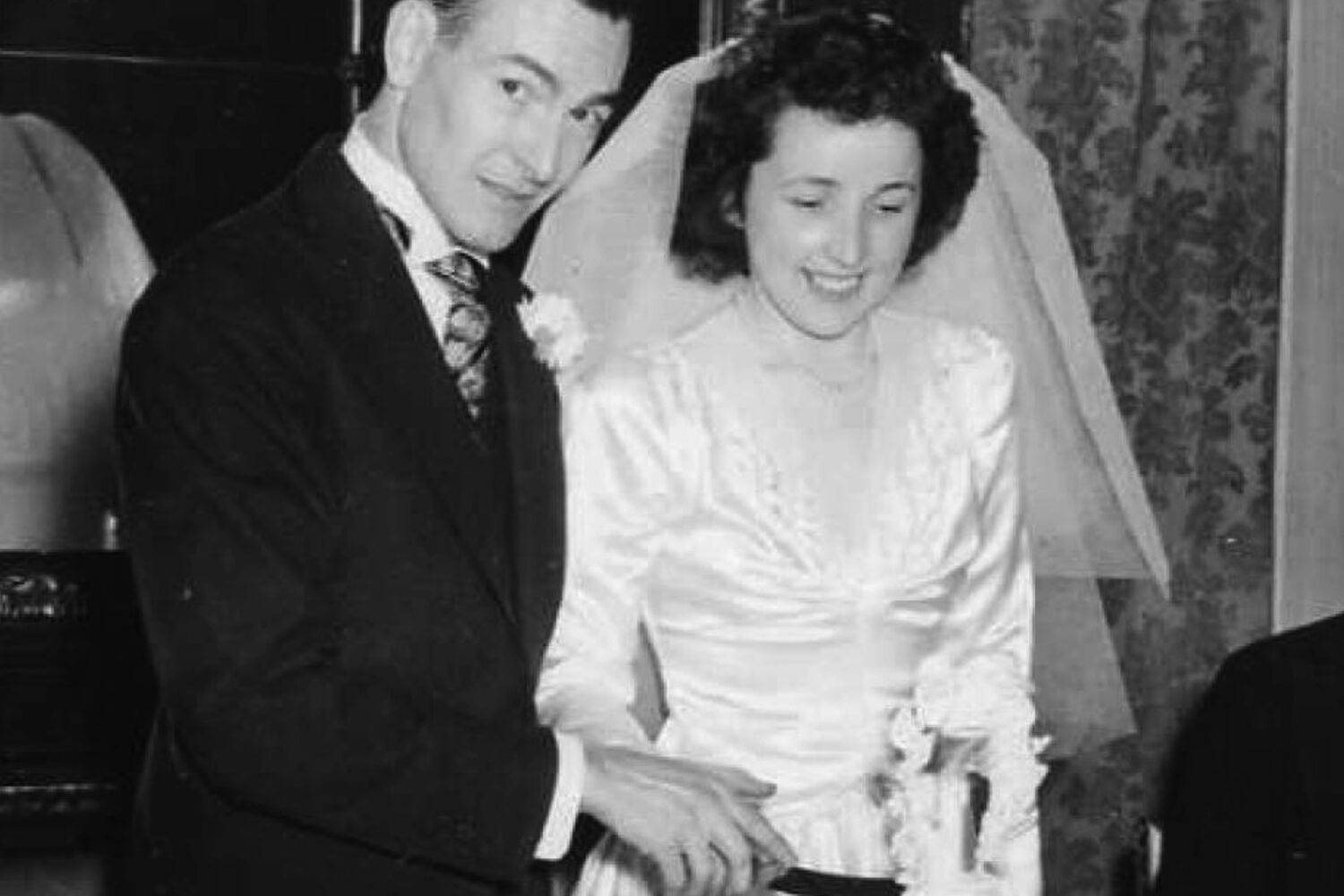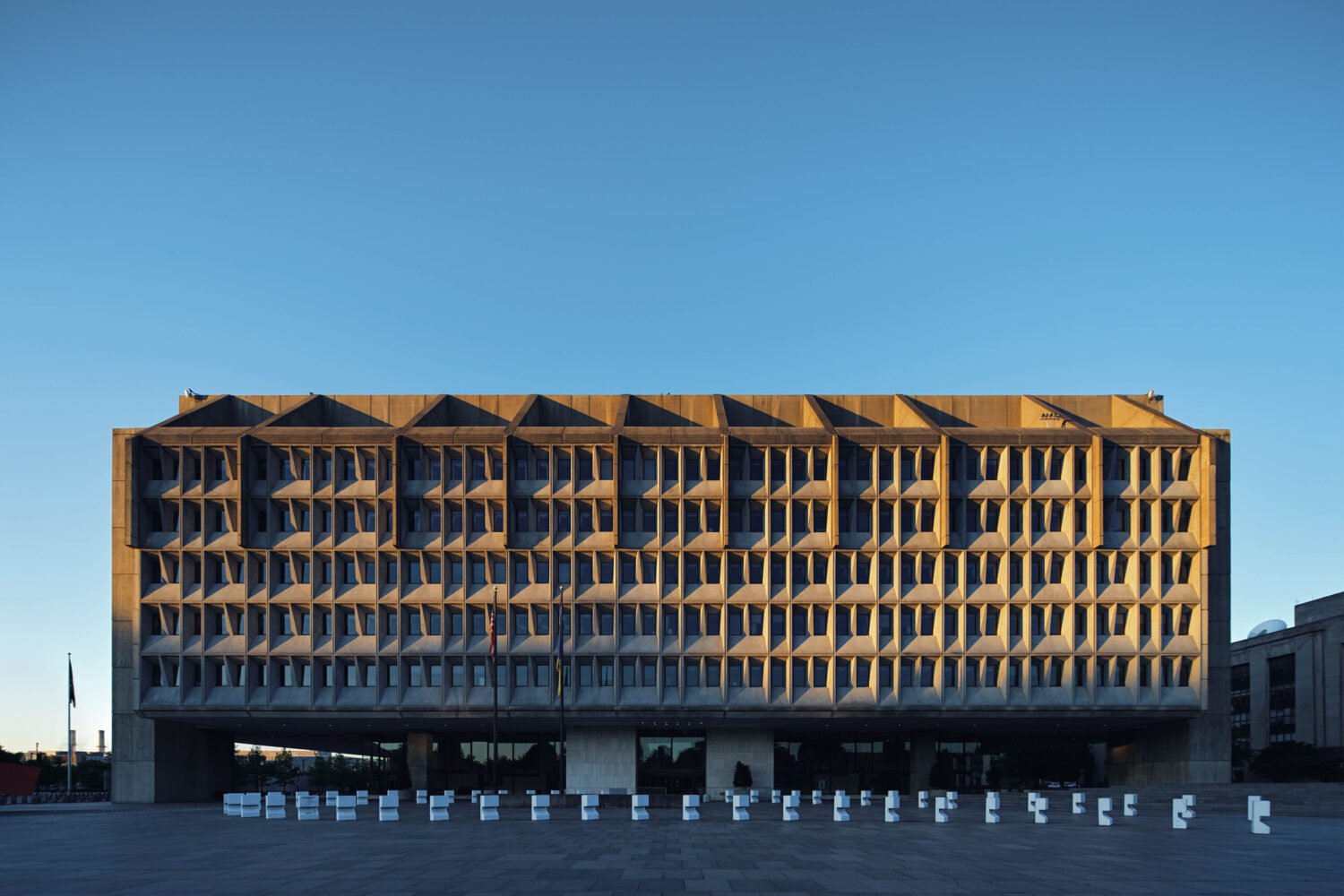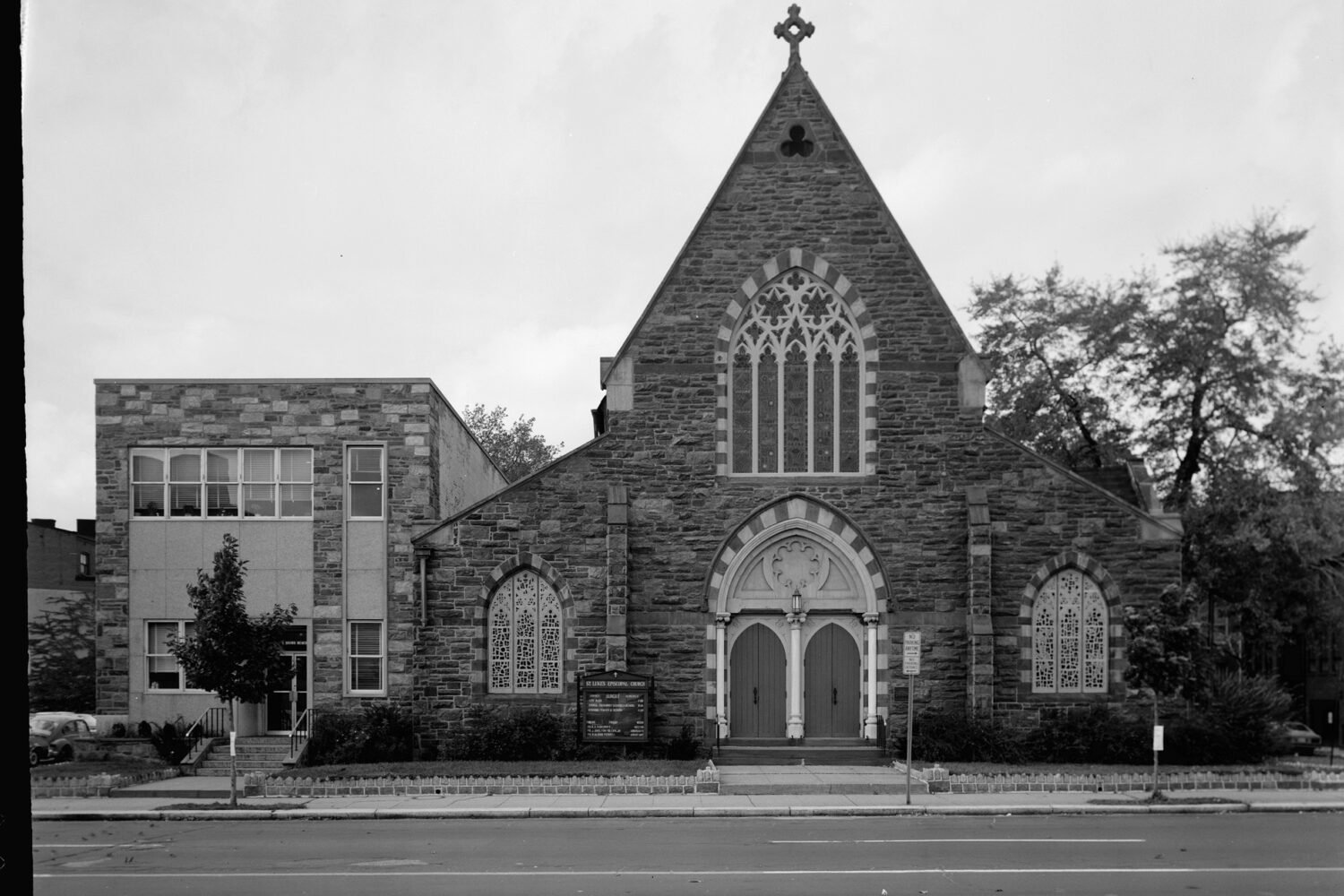For two decades in the 20th century, Washington fell in love with Brutalism.
An architectural style whose name came from the French for “raw concrete,” Brutalism embodied the strength and resilience of the superpower the US had become.
Unlike older monumental styles, Brutalism spent little energy on decoration—it was about showing how things worked. Basic geometric shapes allowed onlookers to easily identify functions from the outside. An inset signified a major entrance; a pop-out meant an important meeting room. Repetition of a single element—say, Metro’s waffle-shaped ceilings—was used to create grandeur. Between 1959 and 1977, the buildings that house what are now the departments of Education; Energy; Health and Human Services; and Housing and Urban Development—all paragons of Brutalism—went up on or near the Mall. Not far away are more subtle examples, including the Watergate complex and Georgetown University’s Lauinger Library.
But for all of its lofty goals, Brutalism can be hard to love. After struggling for years to maintain the Third Church of Christ, Scientist, at 16th and K streets, Northwest, congregants fought historic-designation efforts for their Brutalist sanctuary, preferring to see it destroyed in favor of an office tower. It was demolished in 2014.
Even as other examples come down (the former Washington Post headquarters at 15th and L) or are altered beyond recognition (the Motion Picture Association of America at 16th and I), some great Brutalist works remain. Concrete’s ability to form big domes and arches without supports made possible Metro’s grandest stations—such as Metro Center and Farragut West—designed by Harry Weese. Some Brutalist buildings bring in warmer materials, like wood or brick, to create comfortable, human-scale, and beloved spaces.
The FBI’s J. Edgar Hoover building isn’t one of them.
This massive edifice, completed in 1974, doesn’t fill its block of Pennsylvania Avenue so much as turn it into a black hole, sucking up life and energy with its long, blank walls and curious concrete moat. Just steps from the Mall, the sidewalks outside are deserted, making the site of the nation’s premier law-enforcement agency a great place to break the law: Unlike the rest of our newly bustling downtown, there would be no crowds of witnesses to ID the perps.
• • •
But now the FBI is leaving DC for an undetermined site in Maryland or Virginia, trading Brutalism’s usual maintenance problems—nets have been attached to the building to catch chunks of falling concrete—for a new suburban fortress.
The Hoover building will face the wrecking ball, and Washington will face the question of how to replace the resilience and optimism of a past era. What kind of building feels both monumental and idealistic today?
One suggestion: Bust open the District’s height limit and give people a real vantage from which to see their messy, changing, polyglot city.
RELATED: Angry Reviews of DC Landmarks: The J. Edgar Hoover FBI Building
Most buildings along Pennsylvania are capped at about 160 feet, as tall as buildings anywhere in DC can get. One exception is the nearby Old Post Office, soon to be a Trump hotel, whose tower soars to 315 feet. Allowing another tower a block away from that would relieve the city’s tabletop-flat skyline and provide much-needed interest without upsetting the current balance. The site on which the Hoover building now sits is so mammoth, in fact, that it could be broken up into multiple blocks, accommodating two or more skinnier towers that would allow light and air to pass around them.
Most recent challenges to the height limit focus on Washington’s outer precincts and leave the sedate, ceremonial heart of the capital as Pierre L’Enfant envisioned it more than two centuries ago. Going vertical downtown in this limited way makes sense. Towers would add housing to combat rising home prices, plus offices and shops for businesses that are abandoning suburban industrial parks. The increased density would help populate Pennsylvania Avenue with the sort of crowds who have revitalized nearby Gallery Place. The height of the towers would serve a serious civic purpose by providing an observation deck for tourists as well as locals, who could proudly take in the results of the city’s dramatic transformation over the past 20 years.
Raising the limits, even for a block, would be no joke. But any redevelopment of the FBI building will already involve approval from all sorts of government bodies and preservation commissions. If, as is often said, Pennsylvania Avenue is America’s Main Street, it should also be a main street for the city it’s in, one that’s both real and ceremonial.
That is, after all, the Pennsylvania Avenue we once had. From the late 1800s until its deterioration in the middle of the last century, when President Kennedy ordered it “fixed,” the street teemed with people and activity, theaters, and bars. That’s what a real city looks like, and it’s what we should strive for with each planning decision we make.
This article appears in our July 2016 issue of Washingtonian.
Dan Reed writes Just Up the Pike, a blog focusing on transportation and urban planning in Montgomery County. On Twitter, he’s @justupthepike.



















